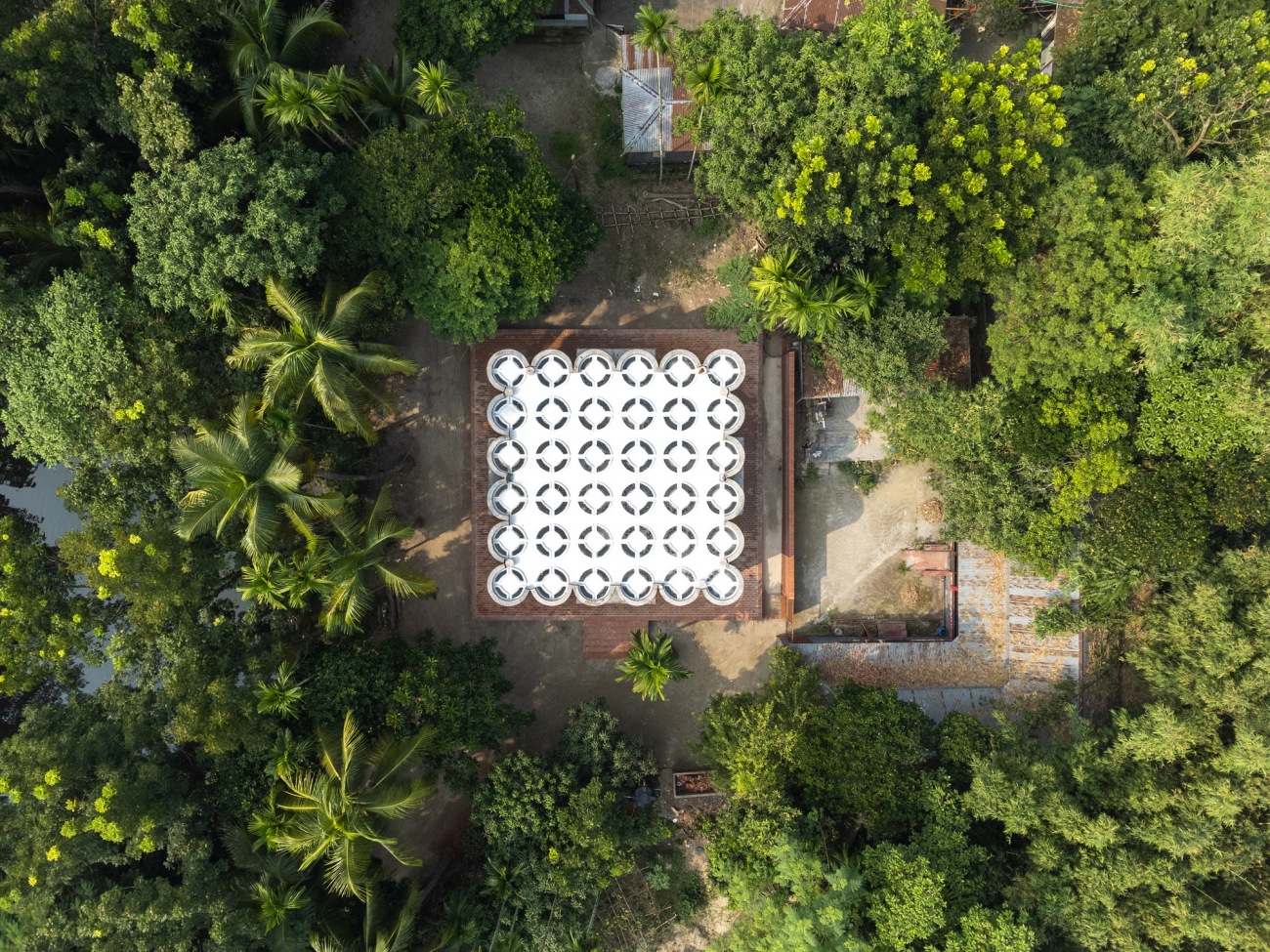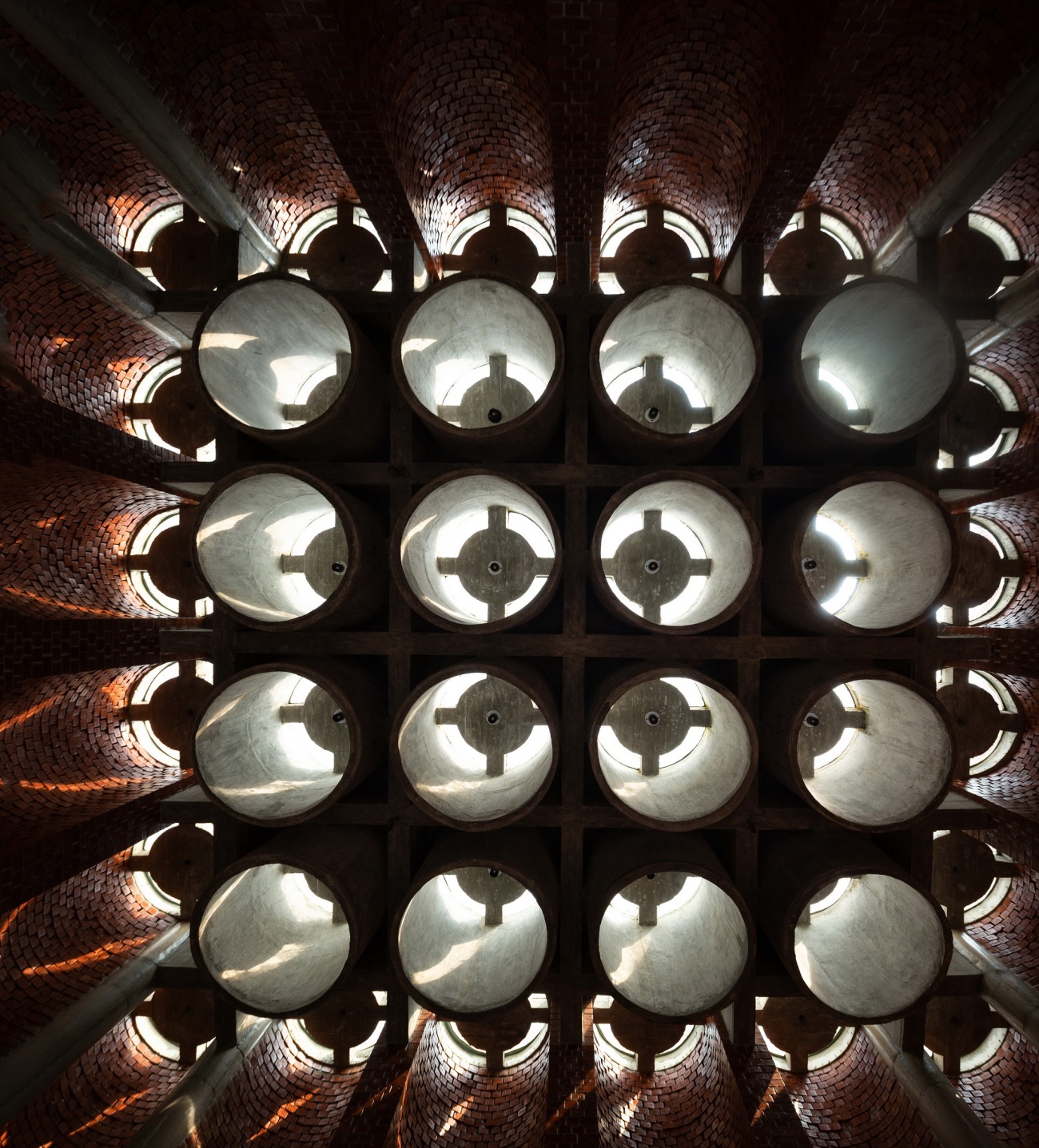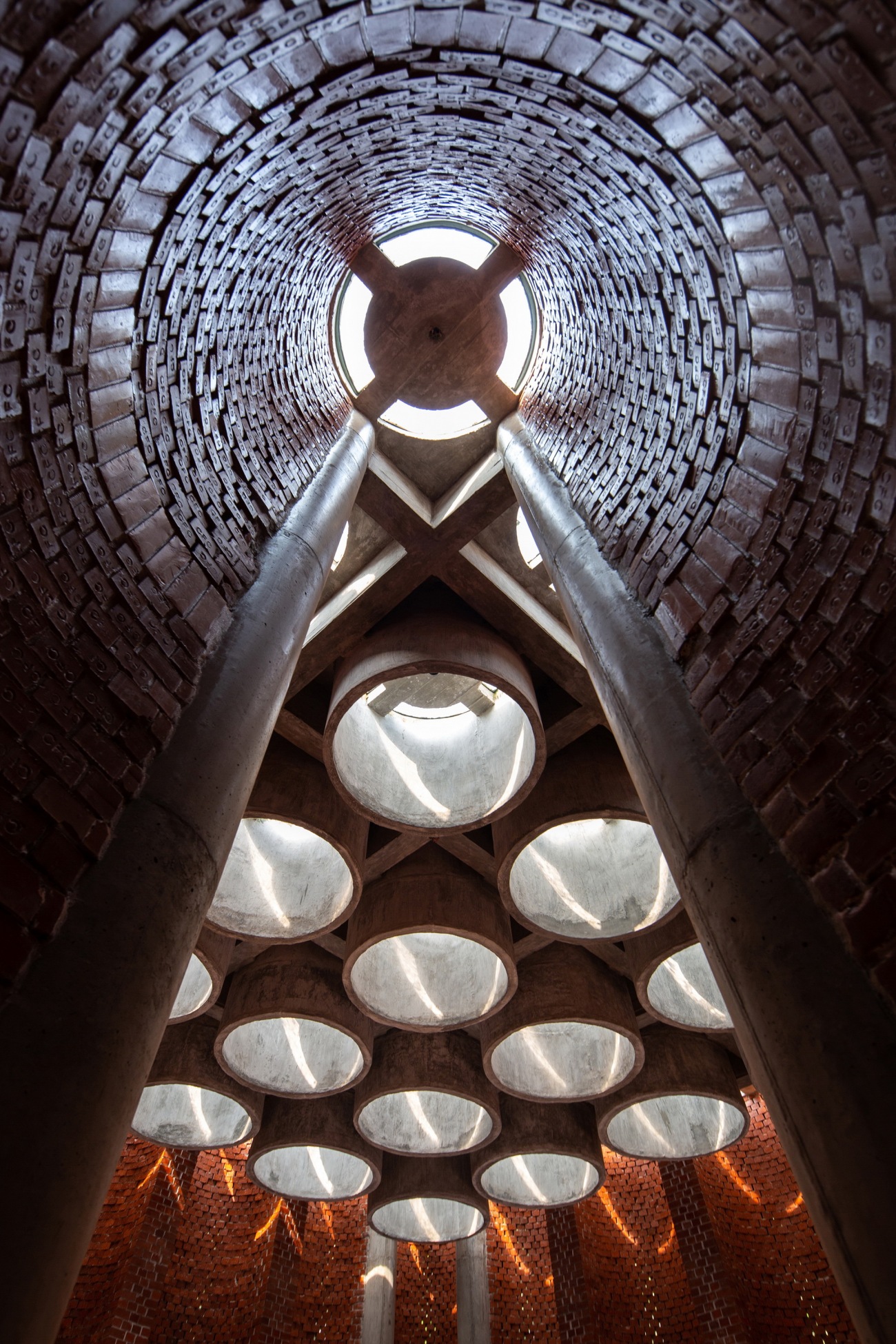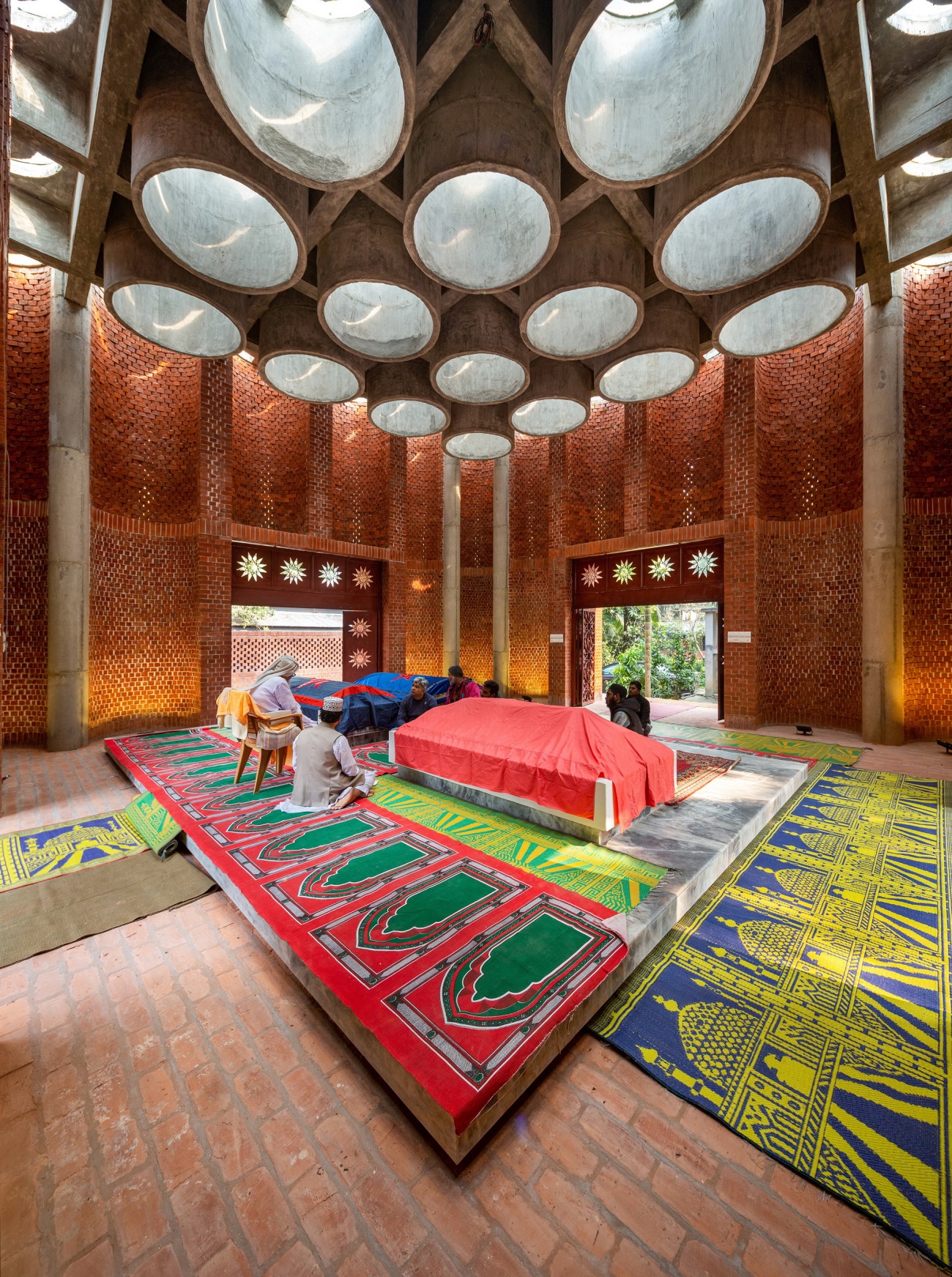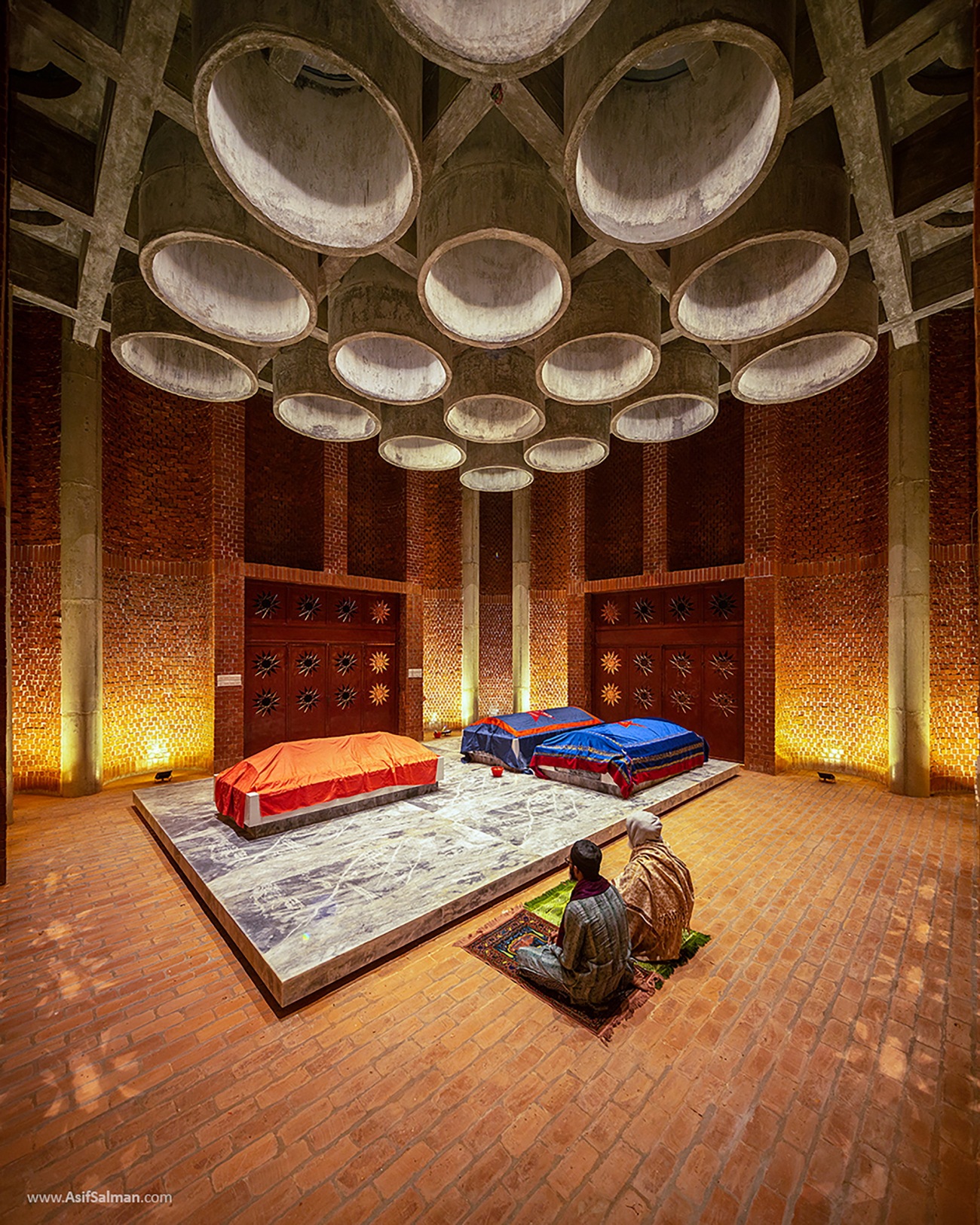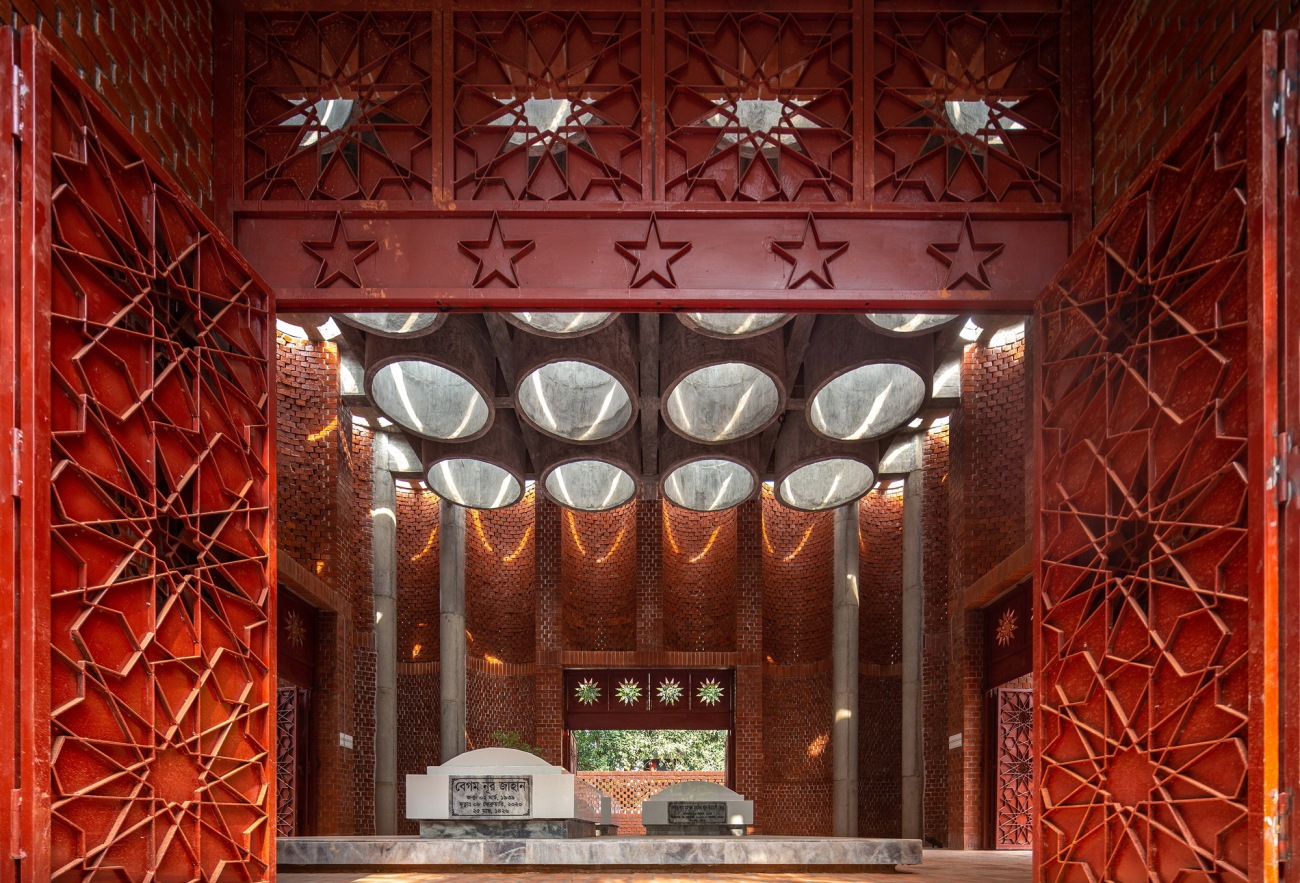该项目是 Hijuli, Manikgong的祖陵(Dorgah)。陵墓旨在追忆他们的“大师”,并发展一个运用伊斯兰教知识来改善社会的机构。自11世纪以来,由于苏菲派的不断到来以及他们对宗教、传教和人道主义活动的参与,苏菲派在孟加拉很流行。该项目是乌瓦伊西·塔里卡的苏菲·皮尔的达尔加,他在当地传播伊斯兰教发挥了重要作用活力。
The project is the ancestral Mausoleum (Dorgah) in Hijuli, Manikgong. The Dargah aims to reminisce the memory of the “Pir" and develop an institution for exercising Islamic Knowledge for the betterment of society. Sufism was popular in Bengal since the eleventh Century due to the continued arrival of Sufis and their involvement in religious, missionary zeal, and humanitarian activities. The project is the Dargah for Sufi Pir of Uwaisi Tariqa, and he plays an important role in spreading Islamic knowledge in the locality.
该项目的概念是通过一个入口的“天堂吊灯”,即屋顶,将灵魂与更高的力量联系起来。隐喻地说,达加是地球上身体休息和灵魂前往天堂的家园。外壳是我们现实的复制,但内部空间将现实超越了它。设计方法随着技术、可用资源、意识形态和当地文化的发展而发展,并将这些转化为当地社区采用的综合解决方案。Dargah的形成、规模和物质性在很大程度上受到了苏丹时期清真寺和陵墓的启发。该项目由最熟悉的元素组成,但有一个新的设计理念,在这一片次大陆上,陵墓的方形平面图是从传统的孟加拉小屋复制而来的。该设计实现了这一理念,产生了一个36'x36 '方形平面的亲密尺度。Dargah建在住宅区内的坟墓上,以吸引当地的注意力,并保持Pir过去生活和实践的原始本质。天花板由36个圆圈组成,灵感来自苏丹时期的多圆顶清真寺。Dargah的侧面立面由重复的塔楼组成,创造了一种熟悉而又标志性的构图。炮塔是半圆形的,上部是穿孔的jalis,用于自然采光和通风。
The Concept of the project was to connect the souls with the higher power through a portal ‘Chandelier of Paradise’, the roof. Metaphorically, Dargha is the home where the earthly body rest and the soul travel to paradise. The outer shell is the replication of our reality but the inner space moves the reality beyond it. The Design approach evolves with techniques, available resources, ideology, and local culture and transforms these into an integrated solution adopted by the local community. The Dargah's formation, scale, and materiality are highly inspired by the Sultani period’s mosques and Tombs. The project is composed of the most familiar elements but with a new interpretation. In this subcontinent, square plans of the tombs were replicated from the traditional Bengal hut. The Design implemented the Idea to generate an intimate scale of 36’x36’ square plan. The Dargah is built over the graves inside the residential complex to draw the attention of the locality and keep the original essence of where the Pir’ used to live and practice. The ceiling is composed of thirty-six circles inspired by the multi-domed mosques of the Sultani period. The side elevations of the Dargah are composed of reinvented repetitive turrets creating a familiar yet iconic composition. The turrets are half circular and the upper part is perforated jalis’ for natural lighting and ventilation.
熟悉的空间和灵感使结构更具适应性,对用户更友好。Dargah的入口保持非正式,没有在入口轴线上强加另一个入口,以表达项目在住宅综合体原始自然环境中的包容性。为了让所有人都能进入,Dargah在东侧有台阶通往3英尺的基地,在北侧有坡道通往它。在苏丹时期,砖和陶土装饰是围墙的主要材料。由于资源有限,采用了当地的泥瓦匠的施工方法。为了实现作为标志性结构的一致性和可接受性,Dargha的外壳和底座仅使用红砖。本地化是通过使用从附近的砖地手工挑选的自然燃烧的红砖来实现的。一般来说,信徒全年都会使用达尔加进行任何伊斯兰讨论,并为社区做出决定,其中所有人的参与。
The familiar Space and the inspiration make the structure more adaptive and friendly for the users. The entrance of the Dargah is kept informal without imposing another entry on the entry axis to express the inclusiveness of the project in the original natural setting of the residential complex. For universal access, the Dargah has steps leading up to the 3' base on the east side and a ramp leading up to it on the north side. In the Sultani period, brick and terracotta decoration was the primary material for the enclosure. Local masons and construction methods were employed due to the limited resources. To Achieve uniformity and acceptance as an iconic structure, only red brick is used as the envelope and the base of the Dargha. Localization is obtained by using hand-picked naturally burned red bricks from the nearby brick field. Generally, the followers use the Dargah all over the year for any Islamic discussions and making decisions for the community, where the participation of all genders and ages is significant. However, the whole complex gets vibrant and overwhelmed during the Urus or the death anniversary of the ‘Pir’.
Project Form
Project name: Shah Muhammad Mohshin Khan Mausoleum
Company name: Sthapotik
Website: https://sthapotik.com
Contact e-mail: sthapotik_arch@yahoo.com
Project Location: Shib Bari, Hijuli, Manikgong, Dhaka, Bangladesh
Completion Year: 2022
Building area (m²): 2116sqft
Lead Architect: Md. Sharif Uddin Ahammed
Other participants
Project Team: Ar. Md. Sharif Uddin Ahammed
Ar. S.M. Mushhfiqul Karim
Ar. Sadeka Badiozzamman
Documentation Team: Ar. Md. Sharif Uddin Ahammed
Ar. Syeda Saikha Sudah
Ar. Asifa Jamal
Photo credits: Asif Salman
Project Description 200 -500 English words + Chinese
更新日期:2023-05-18 10:18:42
非常感谢 Sthapotik 带来的精彩项目, 查阅更多Appreciations towards Sthapotik for sharing wonderful work on hhlloo. Click to see more works!







